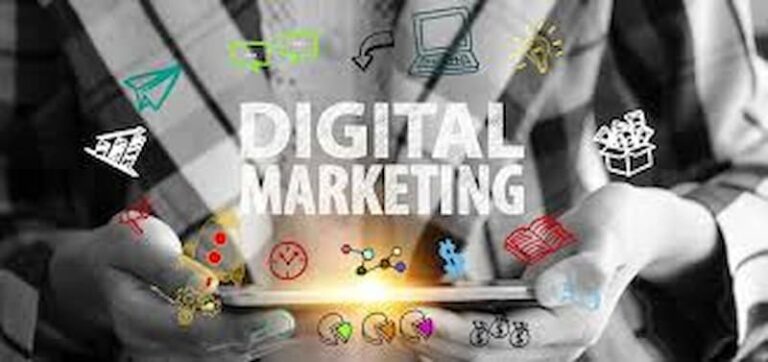Discover how artificial intelligence will change the future of search engine marketing and the role it plays in search engines. The field is changing fast, constantly introducing fresh technologies and advertising methods. In this blog post, we’ll discuss How Is AI Changing The Future Of Search Engine Marketing ? the major SEM trends and how you can incorporate them into your strategy.
Emergence of Artificial Intelligence and Machine Learning
In the realm of Search Engine Marketing (SEM), the emergence of Artificial Intelligence (AI) and Machine Learning (ML) is revolutionizing how we approach advertising. These advanced technologies enable more sophisticated targeting, ad optimization, and personalized messaging, resulting in enhanced campaign performance and ROI.
Automated bid management
With AI-based bid management systems, you can efficiently handle large volumes of data in real-time. These systems dynamically adjust bids for keywords and other advertising targets based on current trends. They also leverage historical data to optimize bids for future ad campaigns.
Ad personalization
Utilizing machine learning, you can analyze user behavior to predict which ads will resonate most with them. This enables highly personalized ad targeting, resulting in increased click-through and conversion rates.
Quality score optimization
AI-driven systems evaluate the quality of your ads and landing pages, recommending changes to enhance quality scores. This not only boosts the likelihood of ad display but also lowers advertising costs.
Automated ad creation
Harnessing AI, companies can automate ad creation, saving time and resources. AI generates relevant and compelling ads tailored to various products or services, improving ad performance across the board.
Predictive analysis
Leveraging machine learning, businesses can analyze vast datasets to uncover patterns and predict future performance. This allows companies to identify growth opportunities and refine their marketing strategies accordingly.
Rise of Voice Search Optimization
With the growing popularity of voice-enabled devices like smartphones and smart speakers, voice search optimization is becoming increasingly vital for SEM practitioners. Optimizing for natural language queries and understanding user intent are crucial strategies for staying ahead in this trend.
Voice search differs from text-based search in several key ways, influencing how users interact with search engines and how companies should optimize for search:
Longer, Conversational Queries
Voice search queries tend to be longer and more conversational. Users speak their queries, often using natural language and asking questions. This can pose a challenge for companies trying to optimize for specific keywords.
Emphasis on Local Queries
Voice search is frequently used for local queries, as users often seek local businesses or points of interest. This underscores the importance for companies to prioritize local SEO optimization.
Mobile-Centric Usage
Voice search is commonly performed on mobile devices, often while users are on the go. Therefore, there’s a need to provide quick, actionable information such as business hours, contact details, and directions.
In summary, optimizing for voice search is becoming increasingly crucial as its usage continues to rise. Understanding the unique characteristics of voice search queries and adapting SEO strategies accordingly can help companies stay ahead in the evolving digital landscape.
Visual Search and Image Recognition
Visual search and image recognition technology are reshaping how users interact with search engines. By optimizing images with descriptive tags and metadata, businesses can capitalize on this trend to enhance their SEM efforts and provide a more engaging user experience. Platforms like Google Lens and Pinterest Lens are making visual search more common. Search engine marketers can take advantage of this trend by optimizing images and videos for search. Using structured data helps search engines understand and index visual content more effectively.
Augmented Reality (AR) Ads
Augmented Reality (AR) ads offer immersive and interactive experiences for users, blurring the line between online and offline marketing. Integrating AR technology into SEM campaigns can capture audience attention and drive higher engagement and conversion rates.
Automation and Smart Bidding
Automation and smart bidding algorithms are streamlining SEM campaign management and optimization processes. By leveraging these tools, marketers can improve efficiency, maximize ad spend, and achieve better campaign outcomes with minimal manual intervention. Automation tools and intelligent bidding algorithms are simplifying campaign management and optimization. Marketers can automate routine tasks and use AI for bid bidding, allowing them to focus on strategy and creativity. This ensures campaigns are more targeted and efficient.
Privacy-Focused Marketing
In the wake of increasing privacy concerns, privacy-focused marketing strategies are gaining traction. Respecting user privacy preferences, obtaining consent, and implementing transparent data practices are essential for building trust and maintaining compliance with regulations like GDPR and CCPA. With rising privacy concerns, SEM is moving towards more privacy-friendly practices. Marketers must adapt to changes in cookie tracking and utilize first-party data effectively. This ensures campaigns comply with privacy regulations while remaining targeted and personalized.
Interactive and Engaging Ad Formats
Interactive and engaging ad formats, such as quizzes, polls, and shoppable ads, are capturing user attention and driving higher levels of engagement. Incorporating these dynamic elements into SEM campaigns can boost brand awareness, foster customer interaction, and increase conversions. The future of search engine marketing will see a surge in interactive ad formats like polls, quizzes, and interactive videos. These formats boost user engagement and offer valuable insights into customer preferences, enabling better targeting and personalization.
Integration of SEM with Other Channels
Integrating SEM with other digital marketing channels, such as social media, email, and content marketing, creates synergies and enhances overall campaign performance. Coordinated cross-channel strategies enable brands to reach audiences across multiple touchpoints and maximize their marketing impact.
Blockchain Technology
Blockchain technology has the potential to revolutionize digital advertising by providing transparency, security, and efficiency in ad transactions. Implementing blockchain solutions can mitigate ad fraud, ensure fair compensation for publishers, and foster trust between advertisers and consumers.
Sustainability and Ethical Marketing
Sustainability and ethical marketing practices are becoming increasingly important for brands seeking to align with consumer values and promote social responsibility. Incorporating eco-friendly messaging, supporting ethical causes, and adopting sustainable business practices can resonate with environmentally conscious audiences and enhance brand reputation.
Zero-Click Searches and Featured Snippets
Zero-click searches, where users obtain information directly from search engine results without clicking through to websites, are changing the landscape of SEO and SEM. Optimizing for featured snippets and rich snippets can help brands capture visibility in these zero-click search results and drive organic traffic.
Measuring Success through KPIs
Measuring success in SEM requires tracking and analyzing key performance indicators (KPIs) to gauge the effectiveness of campaigns. Metrics such as click-through rate (CTR), conversion rate, return on ad spend (ROAS), and cost per acquisition (CPA) provide valuable insights into campaign performance and inform optimization strategies. With the majority of internet traffic now coming from mobile devices, Google’s mobile-first indexing has become a critical factor in SEM strategy. Ensuring websites are mobile-friendly, with fast loading speeds and responsive design, is essential for maintaining visibility and relevance in mobile search results. Additionally, optimizing ad campaigns for mobile users can enhance user experience and drive better results.
Conclusion
In short Artificial intelligence will change the future of search engine marketing as SEM practitioners can expect a dynamic landscape shaped by emerging technologies, evolving consumer behaviors, and shifting industry trends. By staying informed and adapting strategies to capitalize on these trends, marketers can drive better results, improve ROI, and stay ahead of the competition in the ever-changing world of search engine marketing.
As the SEM landscape continues to evolve, staying abreast of emerging trends and adapting strategies accordingly is essential for marketers. By embracing technologies like AI and AR, prioritizing privacy and ethical marketing practices, and optimizing for mobile and voice search, businesses can position themselves for success in an increasingly competitive digital marketplace. By remaining agile and responsive to changes in consumer behavior and technology, marketers can drive better results and achieve long-term success in SEM.
In short no one can know for sure that how artificial intelligence will change the future of search engine marketing But if you remain adaptable and stick to the advice provided, your SEM efforts should be in good shape. However, if you’d rather have professional advice on the matter, our team Bitcodesolution is here to help.
Read our other article:
Top Digital Marketing Services in Lahore: A Comprehensive Guide
FAQS
What is a SEM in business?
SEM stands for search engine optimization. SEM is a way for companies to advertise and promote their content, aiming to boost its visibility in search engine results. Similar to SEO, SEM aims to enhance how content is ranked by search engines.
What is SEM strategy?
In SEM, advertisers bid on keywords used by search engine users, like Google or Bing, to find specific products or services. This boosts the advertiser's visibility in search results for those queries.
What Is Pay-Per-Click Advertising?
PPC, short for pay-per-click advertising, is an online ad model where advertisers pay each time a user clicks on their ad. Paid search ads, including text and visual formats, are the most common types.
How Does PPC Work?
To show ads alongside search results, they go through an automated bidding process called the Ad Auction.
Should I Run PPC Ads On Bing Or Yahoo?
When choosing between Bing and Yahoo for PPC ads, think about your audience, budget, and goals. Each platform has its strengths and reaches different demographics. Consider these factors to pick the best platform for your advertising needs and get the most ROI.
What's The Right Budget For SEM?
Finding the right SEM budget involves considering factors like your business goals, competition, industry, and target audience. Allocate enough funds to reach your audience and meet your objectives. Regularly monitor and adjust your budget based on performance to optimize your SEM campaigns.
How effective is search engine marketing?
Search marketing connects with consumers when they're most receptive: when they're actively seeking information. Unlike many digital ads, PPC is unobtrusive and doesn't disrupt their activities. SEM delivers immediate results, making it one of the quickest ways to boost website traffic.
What are the two main types of search engine marketing?
The two main types of search engine marketing are Search Engine Optimization (SEO) and Pay-Per-Click Advertising (PPC).
What is SEO and how does it impact your business?
SEO means optimizing your website for search engines like Google. This involves improving your content and technical setup so that search engines can easily find, understand, and rank your pages higher in search results.
What is the difference between SEO and SEM?
SEO focuses on improving organic search engine rankings through website optimization, while SEM includes both organic strategies like SEO and paid advertising methods like PPC. In simple terms, SEO is about free methods to boost search visibility, while SEM encompasses both free and paid tactics to drive traffic to a website.




